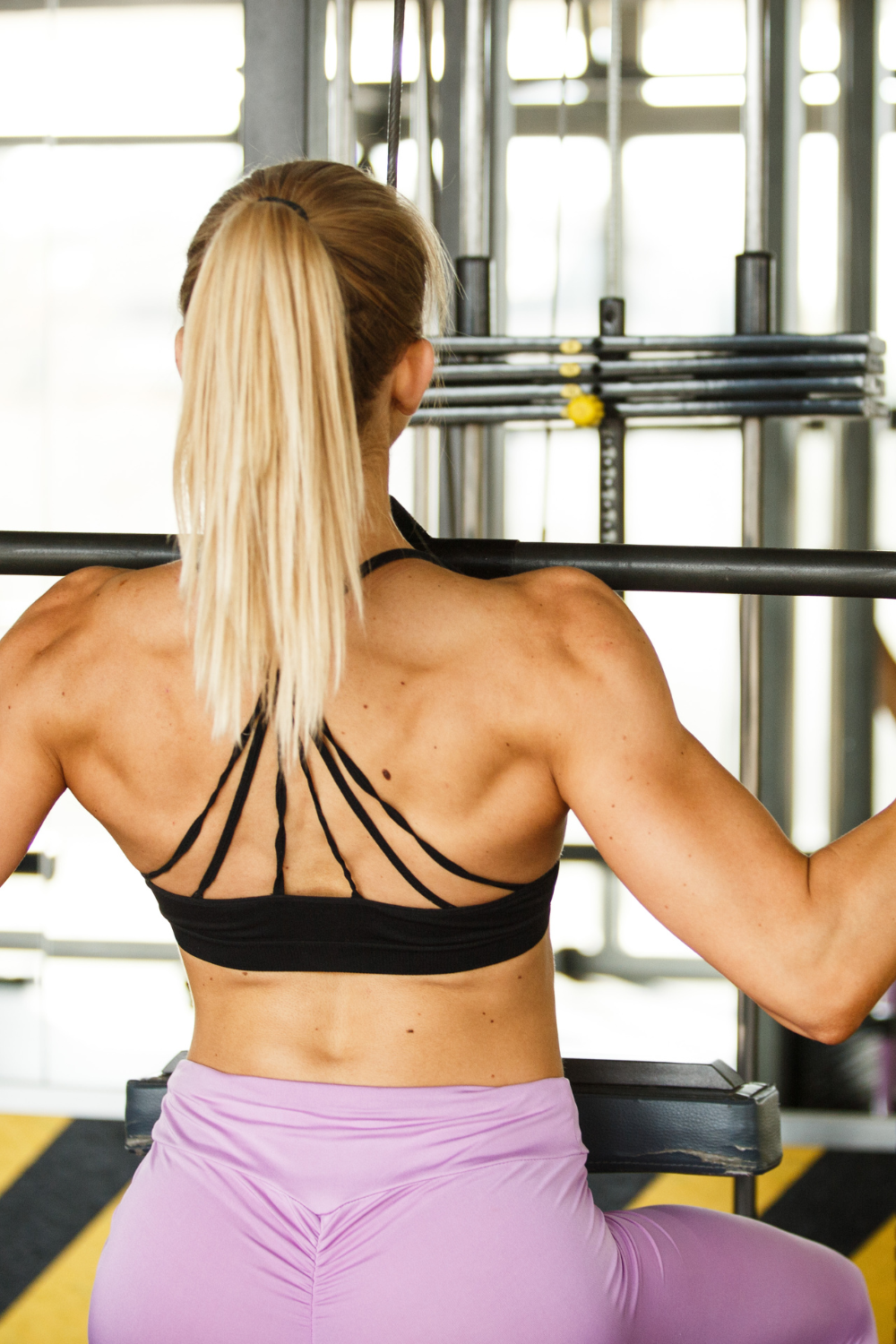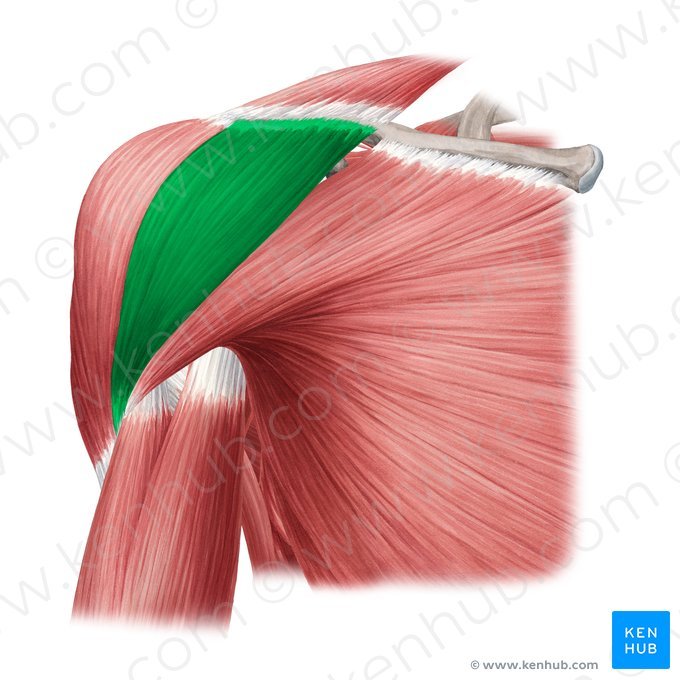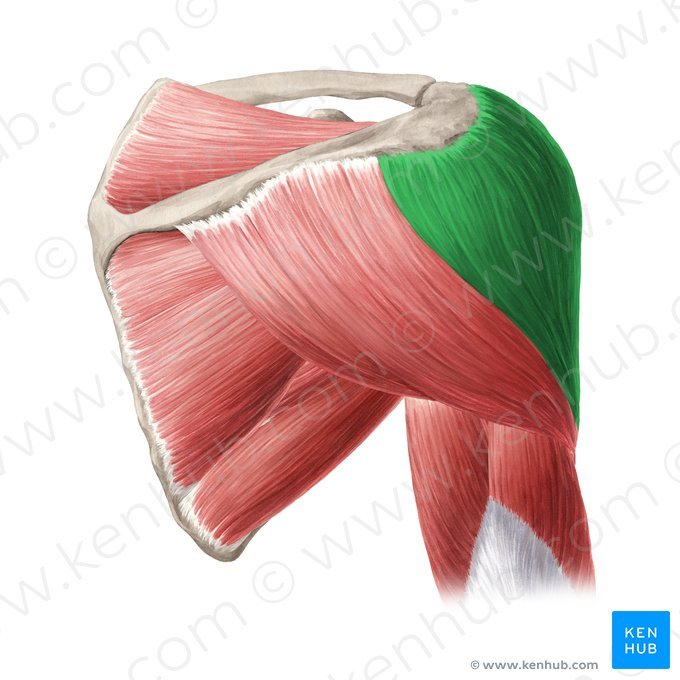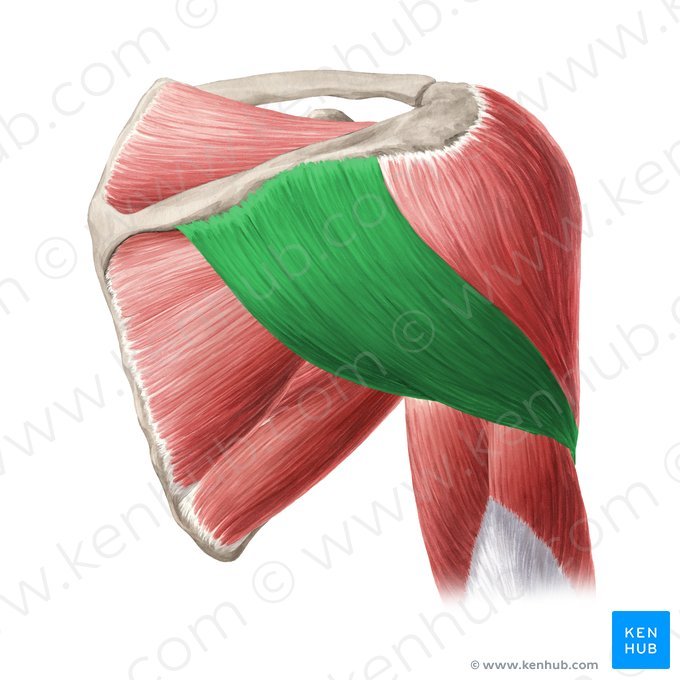10 Exercises to Sculpt Your Shoulders
Many people mistakenly think that doing tons of biceps curls and tricep kickbacks will make their arms look more “toned” and strong. But in reality: it’s the shoulders that really make the arms pop!
I’ve seen guys hitting biceps and triceps really hard in the gym every week, and yet they never feel like their arms look strong enough. That’s because they weren’t putting as much effort into the shoulders!
Training the shoulders is not only important for developing sculpted-looking arms. It’s also a key part of training for injury prevention.
Many of us sit at computers most of the day, which leads to tight, internally-rotated shoulders. Rotator cuff tears are some of the most common injuries for adults—which often happen as a result of having tight and weak shoulders. These can occur in the gym and in everyday life—for example, during a simple movement like reaching into the back seat of a car. So it’s crucial to incorporate shoulder exercises into your weekly training routine.
Shoulder Muscles & Exercises
The deltoids are the main muscles that we want to develop in the shoulders, but you should also pay attention to the external shoulder rotator muscles (teres minor and infraspinatus).
The deltoids (delts) are the muscles that start in your shoulders and go down your upper arms. These muscles take your arms out away from your body at the shoulder joint—so it’s that motion we want to add resistance to in order to build more definition in the shoulders.
The delts have 3 main portions:
anterior (front, clavicular part)
lateral (side, acromial part)
posterior (back, spinal scapular part)
For well-rounded shoulders, you’ll want to practice exercises that hit all 3 of these parts of the deltoid muscle.
The anterior part of the delts get plenty of engagement during horizontal push exercises like bench press, chest press, chest flys—so most people don’t really need to do many exercises specifically for this part of the muscle. The lateral delts and posterior delts, however, do need more focused attention because they don’t get activated as often.
Lateral Delts
The lateral delts are engaged any time you lift your arms out to the side away from your body. To add resistance to this movement, you can do pull-aparts or lateral raises using a resistance band, dumbbells, or a cable:
1 Mini Band Pull-Aparts
The band lateral delt pull-aparts are a great way to connect with your delts muscles using minimal equipment. The key to this exercise is to keep your elbows stiff and allow your delts to do the work. I tell my clients to imagine a penguin flapping its wings. You don’t need to move much to feel the muscles burning in this exercise!
2 Dumbbell Single Arm Lateral Raise
When people perform lateral raises with both arms moving at the same time, often their traps muscles take over as they get tired towards the end of the set. This single arm variation reduces the tendency to shrug the shoulders, therefore keeping the work focused more in the delts.
3 Cable Lateral Raise
Doing the single arm lateral raise with a cable is a great way to ensure the muscles get a more consistent stimulation throughout the whole range of motion. Your muscles have to contract against the same amount of resistance at the bottom of the exercise as at the top—which isn’t the case when using weights.
Sometimes people experience pain in the elbows from doing lateral raises with their arms straight. If that’s the case for you, try a bent-arm variety like the 90º Lateral Raises:
4 90º Lateral Raises
You can do any variation of the lateral raise with a bent elbow to take the strain off your tendons.
Posterior Delts
The posterior delts are a difficult muscle to connect to for many people because we don’t often use them in many activities of daily life. My favorite exercises for engaging the posterior delts use mini bands or cables:
5 Wide Grip Seated Rows
Performing rows with your elbows high will allow you to get deeper engagement in the posterior delts than variations that keep your elbows close (which mainly target the lats). Use a cable machine or resistance band for this variation that targets the back of your shoulders.
6 Mini Band High Rows
Both arms have to work during the mini band high row variation—with one arm holding an isometric contraction while the other arm does the movement of the exercise. Single-arm exercises like this are great for correcting muscle imbalances.
7 Rear Delt Band Flys
This variation of a fly can be done with either a resistance band or a cable machine. The key to hitting the right muscles in this exercise is to avoid contracting your shoulder blades (which engages the traps). Instead, isolate the movement to the back of the shoulder and stop with your hands slightly in front of your body.
External Shoulder Rotators
Another important muscle group to focus on for sculpting strong shoulders is the rotator cuff—especially the parts of the rotator cuff responsible for external rotation. This muscle group is located in the lower back part of the shoulder and helps to rotate your arm outward from the shoulder joint. Most people have weak external shoulder rotator muscles (teres minor and infraspinatus) and tight internally rotated shoulders.
By training this group, you’ll not only give your shoulders more definition but you’ll also improve the health of your shoulders and reduce your risk of injury via rotator cuff tears. My favorite exercises to work on the external rotators are the:
8 External Shoulder Rotation
Do this exercise with a band or cable machine to strengthen the teres minor and infraspinatus muscles. You can perform this exercise seated or standing.
9 Band Low-to High External Rotation
This variation of the external shoulder rotation exercise works the teres minor and infraspinatus with the stimulus coming from below. It’s a great way to engage the back of the shoulder. Make sure to keep your upper arm at the same level throughout the exercise.
10 Cable Face Pulls
This exercise is a mixture between a wide grip row and the low-to-high external shoulder rotation exercise and can be done with either a resistance band or a cable machine. It involves both the motion of pulling the handles towards your head while also rotating externally through the shoulders. You can secure the cable or band at different levels to achieve a novel stimulus.
How to Add To Your Workouts
Add any of these exercises to your weekly resistance training routine to build strong, sculpted shoulders. These exercises are a great addition to an Upper Body focus day (for Upper/Lower splits), Push days (for Push/Pull/Legs splits), or a shoulder-focused day (if you’re doing a “bro” split). On Upper Body or Push days, I suggest doing these exercises after you’ve completed your main compound exercises like bench presses, rows, or pull-ups.
A good rule of thumb is to pick 1 exercise for each muscle (lateral delt, posterior delt, and external rotators). Do 2-3 sets of each exercise, aiming to do between 8 and 12 repetitions. Use a weight or resistance band that allows you to feel the shoulder muscles burning by the end of your set (during reps 8, 9, 10, 11 and 12). Allow your muscles to approach failure, but leave 1 or 2 repetitions in reserve before resting 30-60 seconds. Over time, you can add more sets of each exercise or mix in different variations of the exercise like the ones listed above.
ABOUT JAYD HARRISON
Jayd Harrison is a personal trainer and content creator. She helps people to build muscle, burn fat, and clean up their diets with her online coaching programs and social media content. Check out some of Jayd’s coaching videos on Youtube, or join Jayd live on Twitch and follow on social media:




